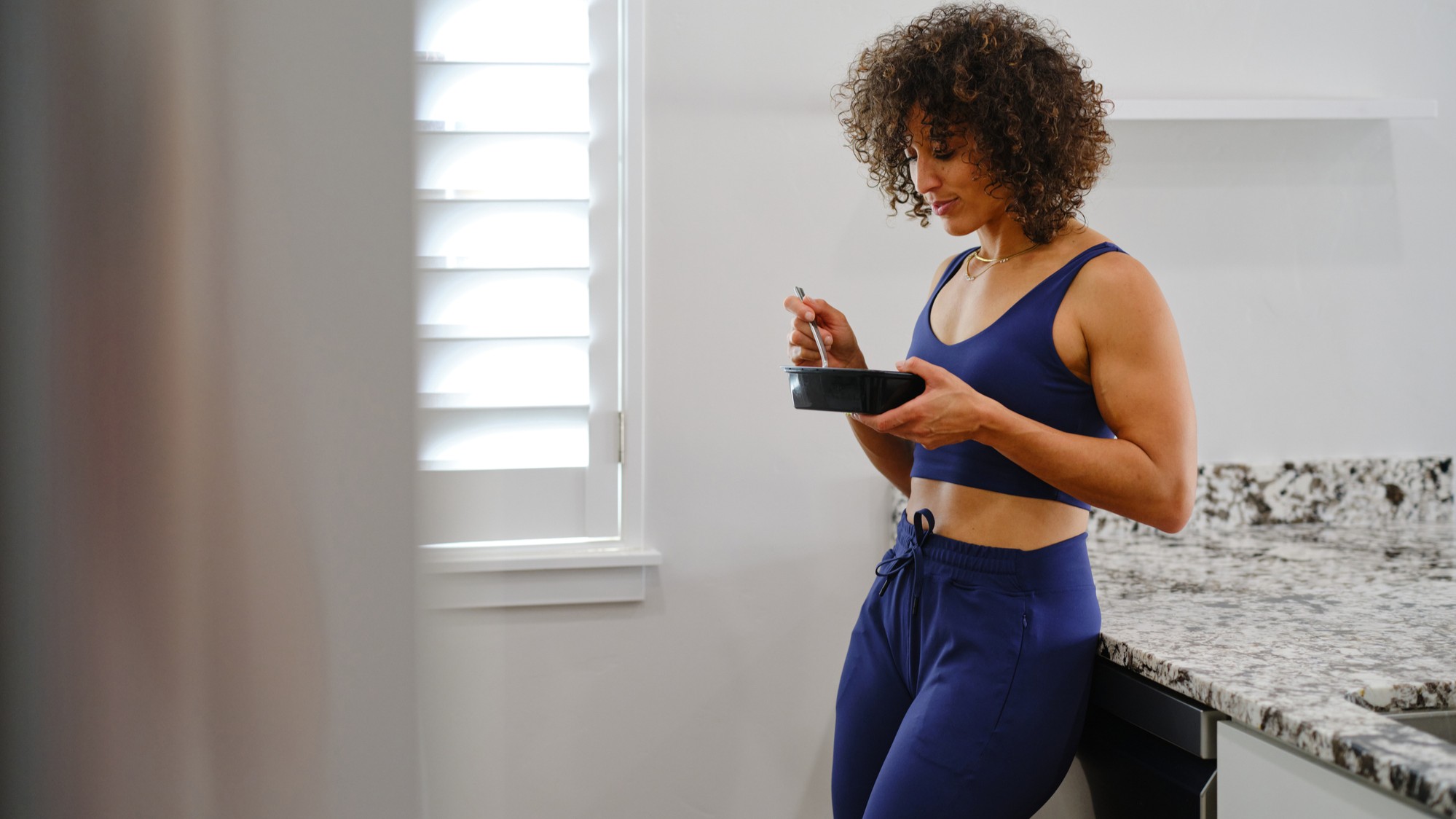I tried eating more fruit and vegetables and I've never felt less hungry
I always struggle to maintain a calorie deficit, but boosting my plant intake made it easy

While a lot of government guidelines state you should aim for four to five portions of fruit and vegetables per day, there's research that suggests there are even more health benefits on offer if you can get to eight to 10 portions a day. Always on the lookout for ways to improve my diet and up for a challenge, I decided to try and pack this number into each day to see what would happen.
I eat meat regularly (at least one portion per day) and part of this challenge for me, was to prove to myself that I could feel good and hit my protein consumption goals without meat. I didn’t cut out dairy—I’ll leave that challenge for another time—but I did completely remove meat from my diet for a week. I was quite surprised to find my protein intake didn’t suffer how I thought it would.
Here's what I ate and what I discovered over the course of the week.
What I ate
I stuck with this daily meal plan all week because the meals were quick and easy, and I could bulk buy all the ingredients I needed. The less I have to think about what I’m going to eat for each meal, the better, as I can sometimes get stuck on not knowing what to eat and end up choosing unhealthy options or letting myself get hungry and then binge eating. My gut also seems to like predictability and eating the same thing every day helps me to control irritable bowel symptoms.
Breakfast: Oats with yogurt, fruit and seeds
I chose this breakfast because it takes a minute to assemble, which is about all the effort I can muster in the mornings. I also have a couple cups of coffee with lactose-free semi-skimmed cow's milk throughout the morning.
Ingredients
- 1 cup Greek yogurt (strawberry flavored and lactose-free)
- ½ cup blueberries
- 1 banana (sliced)
- 1tsp chia seeds
- 1tsp linseeds/flax
- 1tbsp rolled oats
Lunch: Vegetable stir-fry
Again, this stir-fry is really quick to make, going from cutting board to plate in 10 minutes.
Ingredients
- 1 head pak choi, chopped
- 1½ cups chopped mushrooms
- 1 carrot, grated
- A thumb of fresh ginger, grated (dried is fine)
- ½ cup bean sprouts
- 3 spring onions, chopped
- 1tbsp peanut butter
- 1tbsp dark soy sauce
- 1tbsp light soy sauce
- 2tbsp sweet chill sauce
- 1 cup wholewheat noodles
Method
- Heat a tablespoon of oil in a pan then throw the chopped ingredients in and stir fry for five minutes.
- Add the peanut butter and liquid ingredients and mix until they coat the vegetables.
- If you’re using dry noodles, you’ll need to boil them and add them to your veggies once they separate. I use straight-to-wok noodles to save on washing up.
Dinner: Baked sweet potato and cheese
After a long day at work, slinging a potato in an oven is a welcome low-effort dinner.
Get the Fit&Well Newsletter
Start your week with achievable workout ideas, health tips and wellbeing advice in your inbox.
Ingredients
- One medium sweet potato, oven baked until soft
- ½ cup grated smoked cheese
Snacks
Throughout the day I’ll have a few squares of chocolate, some caramel rice cakes and whatever fruit I have in the house (usually oranges or nectarines) and end the day in a modest deficit of 300 calories under my maintenance, tracked on the Samsung Health app.
What I discovered
1. My protein intake was still adequate
While perhaps not quite as high as when I was eating chicken breasts every day, I was surprised to find that I was still consuming enough protein for my body weight—experts recommend around 0.8g of protein per kg of body weight/0.36g per lb according to Harvard Health.
Protein is an essential part of any diet, so I was glad to be consuming the right amount, even when not eating any meat.
My breakfast contains almost 40g of protein, so I’m set up for the day with a lot of my protein requirements already under my belt. Protein is great for giving you that full feeling, known as satiety, according to a review in the British Journal of Nutrition. Speaking of which.
2. I wasn't hungry
The main surprise following this meal plan was that I wasn't hungry. At all. Usually, when I'm eating in a calorie deficit, I'm ready to gnaw my leg off by 5pm and start binge eating at 8pm after obsessing over food for hours. While I tend to eat all my meals earlier than most to stay ahead of my hunger cues (I eat lunch at 10:30am), I didn't hit that evening munchies period and didn't feel the need to binge. This might be due to the increased fiber intake from all the fruit and vegetables, or perhaps because I was eating a higher volume of food for fewer calories.
3. I felt quite perky
Another feature of eating in a calorie deficit that I dislike is I am usually get really moody. Whether it's a mental side effect or down to the decreased calorie intake, I usually find a deficit leaves me grumpy, irritable and not that fun to be around. Perhaps because I wasn't experiencing the hunger pangs, I found myself feeling perky and (don't check with my friends) more fun to be around, despite my decreased calorie intake.
4. My skin improved
Packing my diet with vitamins, minerals and antioxidants from all the fruits and vegetables did wonders for my problematic skin. After a week of eating this way, I found my pimples, dry skin and eczema improved and I wasn't seeing new breakouts or patches appearing.

Lou Mudge is a Health Writer at Future Plc, working across Fit&Well and Coach. She previously worked for Live Science, and regularly writes for Space.com and Pet's Radar. Based in Bath, UK, she has a passion for food, nutrition and health and is eager to demystify diet culture in order to make health and fitness accessible to everybody.
Multiple diagnoses in her early twenties sparked an interest in the gut-brain axis and the impact that diet and exercise can have on both physical and mental health. She was put on the FODMAP elimination diet during this time and learned to adapt recipes to fit these parameters, while retaining core flavors and textures, and now enjoys cooking for gut health.
-
 Put down the protein shake—this high-protein chicken and rice recipe is a better way to refuel after a workout
Put down the protein shake—this high-protein chicken and rice recipe is a better way to refuel after a workoutAnd it only takes 10 minutes to make
By Lou Mudge
-
 The three Pilates exercises every beginner should start with, according to an expert instructor
The three Pilates exercises every beginner should start with, according to an expert instructorA sequence that will take you no more than 10 minutes
By Alice Porter